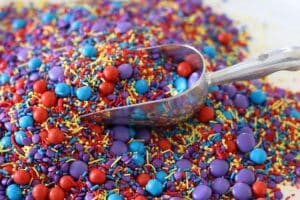What Is ILSI, and Why Does It Hate Our Kids?

Wherever there is a hugely populated country, there is ILSI. Some years back, this was a problem in India because many people wanted manufacturers to begin placing red warning labels on the packaging of highly processed foods. But strangely, the leader of the committee responsible for achieving this reform turned out to be a member of the American non-profit, International Life Sciences Institute, funded by all the biggest producers of ultra-processed foods on the planet.
A reader might ask, “Just a moment, please. Isn’t that exactly backwards?” As a matter of fact, yes. A recent Childhood Obesity News post mentioned what has been deemed a “shadowy industry group,” the International Life Sciences Institute, which has managed to get its fingers into all sorts of places where they don’t belong.
ILSI’s publicly avowed mission is to improve “public and planetary health by convening international experts from academia, the public sector, the private sector, and other NGOs to advance evidence-based scientific research.” The federation currently includes 10 “entities,” namely: Mesoamerica, North Andean, Brazil, Europe, India, Japan, Korea, Taiwan, Southeast Asia, and U.S./Canada/Global (headquartered in the U.S.).
The grim details
It is a 501(c)(3) non-profit which, by law, ought not to “engage in lobbying or political activities.” On its homepage, ILSI’s science videos boast a collective total of 33,726 YouTube views, which is not a lot. (By not a lot, we mean that a podiatrist’s single YouTube video titled “Two-Inch Toenails Trimmed” has accrued 227,000 views.)
Internet searches like ILSI+scandal, ILSI+corruption, ILSI+exposed, and ILSI+unethical bring up alarming results. Even Coca-Cola, which had long been a prominent financial backer, broke up with the non-profit. Mars, Nestlé, and other companies have also severed ties. Apparently, the outfit’s efforts have been focused on such dubious goals as convincing the world that obesity is caused solely by insufficient exercise, and sugar has nothing to do with it. Like so many other organizations that want something quite badly (and quite bad), it entices its members with nice conference vacations, at the very least.
Journalism to the rescue
A few years back, ILSI was examined comprehensively by The New York Times reporter Andrew Jacobs. For the public’s benefit, he broke down for general comprehension information originally made available in professional journals about ILSI, which at the time ran 17 branches around the world. At first, outrage was mainly focused on what was going on in China, with the encouragement and support of that country’s government.
A few months later, Jacobs expanded on the first round of reportage. Harking back to the initial paragraph of our blog post, it turned out that the committee head who put a stop to the red warning labels was ILSI’s own Dr. Boindala Sesikeran. Of course, all suggestions of conflict of interest were righteously denied. “Under no circumstance does ILSI protect industry from being affected by disadvantageous policy and laws,” the official statement attested.
But the jig was up. Jacobs wrote,
After decades largely operating under the radar, ILSI is coming under increasing scrutiny by health advocates in the United States and abroad who say it is little more than a front group advancing the interests of the 400 corporate members that provide its $17 million budget… Over the past year, researchers have documented how the organization’s China affiliate helped shape anti-obesity education campaigns…
But what is wrong with anti-obesity education? Well, it seems the philosophy advocated by ILSI did not call for dietary change, especially if that change involves reducing the amount of sugar that humans consume, even the obese ones. The organization was all about promoting physical activity, which, of course, is excellent advice. But not when it comes along with complete, uncritical acceptance of all the sugar anybody wants.
Your responses and feedback are welcome!
Source: “ ILSI: Collaborative science for safe, nutritious and sustainable food,” ILSI.org, undated
Source: “ How Chummy Are Junk Food Giants and China’s Health Officials? They Share Offices,” NYTimes.com, 01/09/19
Source: “A Shadowy Industry Group Shapes Food Policy Around the World,” NYTimes.com, 09/16/19
Image by NB_art/Pixabay










 FAQs and Media Requests:
FAQs and Media Requests: 











